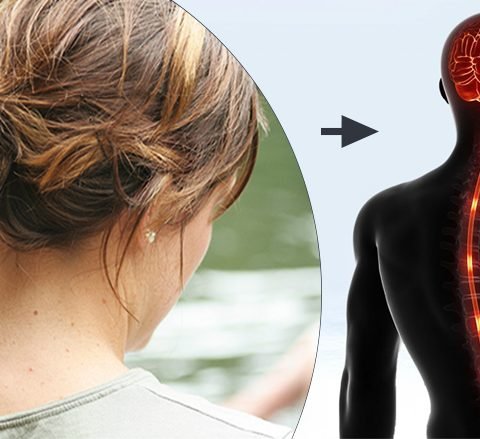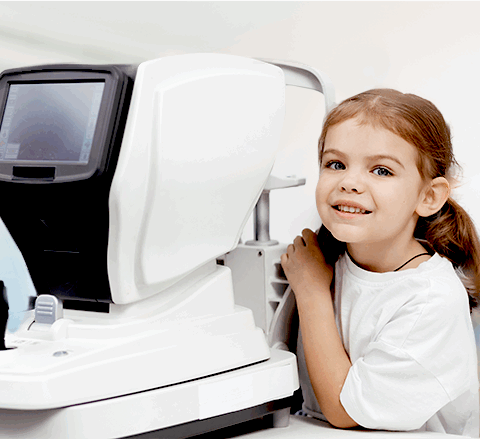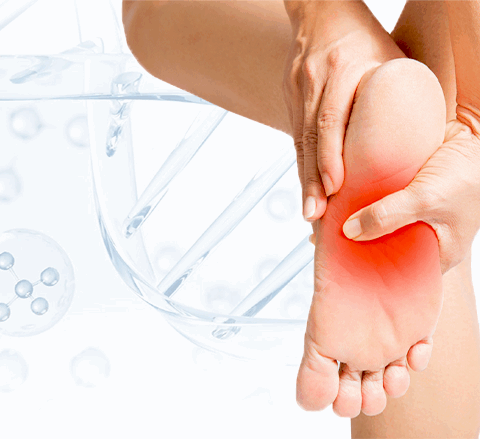📅 Published on: July 16, 2024 | 🔄 Updated on: September 12, 2025 | By: Stem Cell Care India

Several diseases exist in this world and we don’t know about many of them. Unlike, there is an inherited disorder which is rare in type and affects the nerve cells of the brain. The name of this disease is Huntington’s Disease. An individual whose gene on chromosome 4 defected has the most chance to get this rare medical condition. The work of this gene is to produce a protein, known as huntingtin. The function of huntingtin is still unknown but some researchers explained that it has an important role in nerve cells to provide normal development before birth. The size of this protein is larger than usual in those people who are suffering from Huntington’s Disease. This large amount of protein slowly starts damaging the brain’s cells.
Huntington’s Disease is also known as progressive disease which means it can get worse over time. Person’s ability to think, talk, move starts to decline. If they don’t receive the right treatment the person can gradually lose their ability to control their movements and it causes changes in their thinking and behavior. The normal age range of the person who gets this disease is 30 and 50 but it can appear earlier or later. Genetics can also be a factor of this disease. For example, if a person is suffering from Huntington’s Disease, then there is a 50% chance that their child can get these faulty genes.
Many parts of an individual’s life can be affected by this medical condition such as their job, relationships, and daily activities. Taking care of someone with Huntington’s disease can be tough. Family members and caregivers often need to help more as the disease gets worse. Researchers are working hard to learn more about Huntington’s disease. Understanding the disease can provide help for those who are affected with this disease and can raise the awareness to improve the lives of the people with Huntington’s disease and their families.
Huntington’s Disease can affect the nerve cells of the brain and break it if proper treatment cannot be received. Although the symptoms of this disease can be shown at any age, most of the people who are suffering are between the age of 30 and 50. It can affect the physical movements and daily life of the person that’s why recognising the symptoms earlier can help you to take the proper treatment. You can consider the early symptoms of Huntington’s Disease as normal health issues. But, As the disease gets worse, it makes it hard for the person to think, move, and talk. Let’s see what are the symptoms of Huntington’s Disease , so you can take the proper treatment on time:
- Physical Symptoms
- Involuntary Jerking or Writhing Movements (Chorea): These are the most common physical symptoms and can be mild at first but usually become more pronounced over time.
- Muscle Problems: This includes muscle rigidity or muscle contracture (dystonia).
- Slow or Abnormal Eye Movements: Difficulty in moving the eyes quickly from one target to another.
- Impaired Balance and Posture: Problems with coordination and difficulty walking.
- Difficulty with Speech and Swallowing: Trouble speaking clearly and swallowing food or liquids.
- Cognitive Symptoms
- Difficulty in Planning and Organizing: Struggles with multi-tasking and planning activities.
- Lack of Flexibility: Finding it hard to shift from one activity or thought to another.
- Lack of Impulse Control: This can result in outbursts, acting without thinking, and sexual promiscuity.
- Problems with Learning New Information: Difficulty in learning new things or remembering recent information.
- Psychiatric Symptoms
- Depression: This can include persistent sadness, feelings of worthlessness, and loss of interest in activities once enjoyed.
- Obsessive-Compulsive Disorder (OCD): Recurrent, intrusive thoughts and repetitive behaviors.
- Mania: Elevated mood, overactivity, and inflated self-esteem.
- Bipolar Disorder: Alternating episodes of depression and mania.
Every disease has its types or stages which can help patients or doctors to describe what one you are suffering from and the same for Huntington’s Disease. This is a rare type of inherited disorder that can cause difficulty in thinking, mobility, and daily activities. It can be caused by HTT gene mutations. In simple words, changes in genes of chromosome 4 lead to the production of abnormal proteins and can give birth to this disease. Doctors and researchers divide this disease into three different types on the basis of age and symptoms. Which are as follows:
- Adult-Onset HD: This is the most common type, where symptoms usually start appearing in adulthood, typically between the ages of 30 and 50 years. Initially, subtle changes in coordination, mood swings, and difficulty concentrating may occur. As the disease progresses, involuntary movements (chorea), slurred speech, and cognitive decline become more pronounced.
- Juvenile HD: Also known as early-onset HD, this type begins in childhood or adolescence, usually before the age of 20. Symptoms may include difficulties with walking, speech, and coordination, as well as behavioral changes. Juvenile HD progresses more rapidly than the adult-onset form and tends to have a more severe impact on cognitive functions.
- Late-Onset HD: In rare cases, symptoms may not appear until after the age of 50. This form often progresses more slowly than adult-onset HD, but the symptoms and their impact on daily life are similar.
The main cause of Huntington’s Disease is genetic mutation. But there are also other causes too which can lead to progress of this disease. People who are suffering from this disease are having difficulty in their daily work. However, the early symptoms can seem like normal disease but ignoring them only makes it worse. The mutation of genes can result in the production of an abnormal form of the huntingtin protein, leading to the disease’s onset and progression. You have to get a regular diagnosis from a reputed hospital or medical center. Below we mentioned the other causes of Huntington’s Disease. This may help you to reduce the symptoms to some points.
- Genetic Mutation: The primary cause lies in a mutation in the HTT gene located on chromosome 4. This mutation involves the expansion of a specific segment of DNA known as a CAG repeat. Normally, this segment repeats between 10 to 35 times within the gene. In individuals with Huntington’s disease, this repeat expands beyond 36 times, leading to the production of a faulty huntingtin protein.
- Inheritance Pattern: Huntington’s disease follows an autosomal dominant inheritance pattern. This means that a person only needs to inherit one copy of the mutated gene from one parent to develop the disease. Each child of a parent with the mutation has a 50% chance of inheriting the mutated gene.
- Neurological Effects: The mutated huntingtin protein interferes with the normal functions of neurons in certain areas of the brain, particularly the basal ganglia. These brain structures are crucial for movement coordination, cognition, and emotional processing. As the disease progresses, neurons in these regions degenerate, leading to the characteristic symptoms of Huntington’s disease.
- Age of Onset: While Huntington’s disease is present from birth due to the genetic mutation, symptoms typically manifest in adulthood, usually between the ages of 30 to 50 years. The severity and onset of symptoms can vary widely among individuals, even within the same family.
Diagnosis is an important step before any treatment. It can help you to find the main cause of the disease to take the suitable treatment according to the needs. An individual can get a diagnosis from the prescribed hospital or from a clinic they are comfortable with. Stem Cell Care India has collaboration with various reputed hospitals and medical facilities for a better diagnosis. You can talk to our professionals on call or send them mail. Now, we mentioned some test below which is essential to find out the main cause of Huntington’s Disease:
- Medical History and Physical Examination
Doctors begin by taking a detailed medical history to understand the patient’s symptoms and family background. A physical examination may reveal signs such as involuntary movements (chorea), impaired coordination, and cognitive changes.
- Genetic Testing
Genetic testing is crucial for diagnosing Huntington’s disease definitively. A blood sample is taken to analyze the HTT gene. If the mutation responsible for Huntington’s disease is found, the diagnosis is confirmed. Genetic testing can show if someone might have gotten a changed gene from a parent who has a problem.
- Neurological and Psychiatric Evaluation
Neurological assessments help doctors evaluate motor skills, reflexes, and cognitive functions. Psychiatric evaluations check how people feel, act differently, and think. These assessments help to check how a disease is getting worse and plan how to take care of it.
- Imaging Studies
Doctors can easily find the structural changes in the brain by using brain imaging such as magnetic resonance imaging (MRI) or computed tomography (CT) scans. These scans might reveal that certain parts, like the basal ganglia, are getting smaller. This happens first in Huntington’s disease.
- Laboratory Tests
While there is no specific blood test for Huntington’s disease itself, certain laboratory tests may be conducted to rule out other conditions that could cause similar symptoms.
Huntington’s Disease is that disease which can affect your brain nerve cells by secreting some toxic protein. You will experience several symptoms such as lack of impulse control, muscle problem, OCD, etc. It has no cure till the date but you can reduce its symptoms and progression by taking an innovative medical approach and it is known as stem cell therapy. This therapy has the power of unique cells called stem cells. These cells can differentiate themselves into different specialized cells including neurons which helps to reduce the symptoms and provide improvements to the brain.
Stem cells can inject into the affected area of the brain and then they find the damaged cells to replace them with the new ones. This process may take months to treat the condition but if you have a healthy body then it can show the result in a few months. But you can not totally rely on this method because it is still under experiment. You should take advice from Stem Cell Care India or your own diagnostic.
Procedure of stem cell treatment for Huntington’s Disease may take three days to complete. After that, medical professionals will provide you with the follow up to check if there is any problem left. This follow-up can also be useful to find out side effects of the treatment. Let’s look out the procedure in brief:
Day 1
- Taking you from the airport and dropping you at the hospital.
- Doctors will ask you about your condition and clarify all your questions regarding the treatment.
- Your admission procedure will complete.
- Doctors do some clinical tests and laboratory tests.
- You will receive supportive therapy.
Day 2
- Huntington’s Disease treatment procedure will start.
- Additional supportive therapies will be provided
- Undergoes in some counseling sessions
Day 3
- Supportive therapies will start to continue.
- Taking part in physiotherapy sessions.
- Important paperwork will be done before discharge.
- See you off at the airport from the hospital.
Note: You have to bring some important things with you which are a valid identification card (Passport/Pan Card/Driving License), and a hard copy of a patient’s medical reports for the admission process.
Stem cells are the best option to treat different medical conditions including Huntington’s Disease. These cells have the regenerative properties to attack the damaged cells and replace them. Many people are experiencing several benefits after taking stem cell therapy and living their quality life. Stem cells can be administered by several methods which includes, intravenous administration, intrathecal administration, intra-arterial, subcutaneous, etc. We will provide you with the information with a brief study of these administrations. Every administration has its own advantages and approach.
- Intravenous Administration involves injecting stem cells directly into the bloodstream. This method is relatively simple and less invasive compared to others. The stem cells travel through the blood to reach the brain, but only a small percentage might actually reach the target area.
- Intrathecal Administration entails injecting stem cells into the cerebrospinal fluid surrounding the brain and spinal cord. This method allows for a more direct delivery of stem cells to the brain, increasing the chances of the cells reaching the affected areas. It is more invasive than intravenous administration but can be more effective.
- Intra-Arterial Administration involves injecting stem cells directly into the arteries supplying blood to the brain. This method ensures a higher concentration of stem cells reaching the brain compared to intravenous administration. However, it is a complex and invasive procedure requiring precise targeting to avoid complications.
- Subcutaneous Administration is the injection of stem cells under the skin. This method is the least invasive and easiest to perform, but it is not the most effective for treating brain diseases. Stem cells need to travel a long way through the body to reach the brain, making this method less efficient.
- Intramuscular Administration involves injecting stem cells into the muscles. While this method is also less invasive, similar to subcutaneous administration, it is not the most effective for targeting the brain. Stem cells must travel through the bloodstream to reach the brain, and only a small amount may reach the target area
Q1. At what age do symptoms of Huntington’s disease typically appear?
Ans: Individuals can experience the symptoms of Huntington’s Disease at the age of 30 and 50. But, it cannot be set at this age. Many people find out the symptoms at 20 years of age and some at their old age. If we talk about the symptoms, then you can feel changes in mood, cognition, and motor skills. Genetic factors, especially the number of CAG repeats in the HTT gene, can affect when a condition starts and how quickly it gets worse.
Q2. Are there any treatments available for Huntington’s disease?
Ans: Yes, there are various treatments that can help you to reduce the symptoms and stop the progression of this disease. One of the best treatments is stem cell therapy. This therapy has several properties such as immunomodulatory, anti-inflammatory, etc. you will experience improvements in various sectors which include reduction in muscle problem, better cognitive function, and many more. Taking this treatment from a reputed medical facility or hospital can increase your chance of getting treated.
Q3. How does Huntington’s disease affect movement?
Ans: Huntington’s disease (HD) makes it hard to move because it slowly damages nerve cells in the brain, especially in the parts that help control movement.This leads to involuntary jerking or writhing movements known as chorea, muscle problems such as rigidity or muscle contracture (dystonia), and slow or abnormal eye movements. People with HD may also experience difficulty with speech and swallowing. Over time, these symptoms get worse, making it hard to control movements, coordination, and balance, and eventually causing serious physical disabilities. Movement problems in Huntington’s disease really affect what you can do each day and how good your life feels.
Q4. How does genetic testing for Huntington’s disease work?
Ans: Genetic testing for Huntington’s disease (HD) involves analyzing a person’s DNA for specific mutations in the HTT gene. This gene usually tells your body how to make a protein called huntingtin. In HD, an abnormal form of this protein damages nerve cells in the brain over time, leading to symptoms like involuntary movements, emotional disturbances, and cognitive decline. The test typically looks for an expanded CAG repeat in the HTT gene. Normally, this repeat section is repeated 10-35 times, but in individuals with HD, it’s repeated 36 or more times.
Q5. Can Huntington Disease affect daily life?
Ans: Huntington’s disease really changes life a lot because it gets worse over time. Initially manifesting as subtle changes in coordination, cognition, and mood, it escalates to severe movement disorders, cognitive decline, and psychiatric symptoms. Tasks such as walking, talking, and eating become hard, so you need help with everyday things. Emotional ups and downs and trouble thinking clearly make it hard to get along and do well at work.
People who are suffering from Huntington’s Disease, searching for the treatment that provides relief to them. Stem cell therapy is one of the best treatments that shows remarkable results. This therapy harnesses the power of stem cells and uses it to reduce the symptoms and treat the root cause of the disease. Huntington’s Disease can be a dangerous disease which may create problems with cognitive functions and psychiatric order. Researchers are making stem cell therapy more effective on this disease. Stem cell therapy has the regenerative potential to restore or replace the damaged cells and provide several improvements which are as follows:
- Motor Function Improvement: Stem cell therapy has been shown to improve motor functions in patients with Huntington’s disease. Patients have experienced better control over their movements and a reduction in involuntary jerking and twitching.
- Cognitive Enhancement: There is evidence that stem cell therapy can improve cognitive functions. Patients have shown better memory, thinking, and reasoning abilities, making it easier for them to perform daily tasks.
- Reduced Brain Degeneration: Stem cells can help slow down the degeneration of brain cells, which is a key factor in Huntington’s disease. This can lead to a slower progression of symptoms and a longer period of relatively normal function.
- Improved Mood and Behavior: Many patients with Huntington’s disease suffer from depression and mood swings. Stem cell therapy has been found to help stabilize mood and improve behavior, leading to a better quality of life.
- Enhanced Quality of Life: Overall, patients undergoing stem cell therapy have reported an improved quality of life. They can do more things, stay independent longer, and have fewer serious health problems.
- Potential for Disease Modification: Stem cell therapy can not only help with symptoms but might also change how a disease progresses. Fixing damaged brain cells could change how the disease develops.
- Fewer Side Effects: Compared to regular treatments, stem cell therapy usually has fewer side effects, making it safer for many patients.
Huntington’s Disease may cause physical, cognitive, and emotional symptoms and it get worsen over time. This disease can be occurred in the brain and damage the neurons by secreting a harmful and toxic protein. Although there is now care of this disease yet researchers are finding the way to treat it. Stem cell therapy is making their way in the field of regenerative medicine because of its regenerative capabilities. People are experiencing many benefits and improvements which make it a preferable choice. Here’s how stem cells work and their potential for treating HD:
- Neurogenesis: Stem cells can generate new neurons, a process called neurogenesis. Stem cells can help to replace the lost or damaged cells with the new one to improve the brain function.
- Cell Transplantation: Scientists can transplant stem cells into the brain to replace the dying neurons. These cells which are transplanted into the brain make their way to the affected area and restore some of the lost cells.
- Gene Therapy: Stem cells can be genetically modified to carry healthy copies of the huntingtin gene, which is mutated in HD patients. After the modification, these cells were transplanted into the brain. Then, they start producing huntingtin protein to slow down or stop the progression of the disease.
- Drug Screening and Development: Researchers are making Huntington’s Disease models through stem cells in the lab. The use of these models is to understand the disease and find treatment. Scientists are doing various clinical trials on stem cells to make it a more effective treatment by observing how these drugs affect the stem cells with the HD mutation.
- Reducing Inflammation: Stem cells can also secrete factors that reduce inflammation in the brain, which is a common feature of HD.
- Clinical Trials: Several clinical trials are underway to test the safety and effectiveness of stem cell therapy in HD patients. These trials are crucial for determining the potential of stem cells in treating HD and ensuring that the treatments are safe for patients.
Huntington’s Disease is a dangerous inherited condition which can be harmful if it does not get treated on time. Early symptoms of this disease can be shown at the age of 30 and 50 but you can also witness it at any age. The symptoms may look similar to normal disease that’s why people are getting confused with it. If you are noticing the symptoms, then you should have to visit us. Stem Cell Care India is one of the leading healthcare consultants in India and promised to help you in any condition. Our commitment is to provide healthcare support to the maximum of patients, so that no one will be left untreated. You can talk to our team of professionals about your conditions and they will provide you with the expert advice. We know how much you are suffering but now we will not give you any chance to make it worse. Trust us as your caretaker and we will assist you whenever you want.
Stem cell therapy is an effective medical approach as well as expensive. Many western countries treat the people with this therapy with an expensive price which causes problems for those people who have less money. India is the country of innovative medical practices and that’s the reason why people are choosing us. The cost of stem cell therapy for Huntington’s Disease is lower than other western countries. Now, you are thinking that if the price is low then the treatment will also be low. Stem Cell Care India has associations with various hospitals and medical facilities who have low prices and don’t compromise with the quality. Some factors can influence the price range which are severity of the disease, age of the patient, which stem cell you utilize in the treatment, etc. But don’t worry it doesn’t cost you that much.
People demand stem cell therapy for various medical conditions including Huntington’s Disease because of its remarkable results. This therapy uses unique cells called stem cells to treat the symptoms of Huntington’s Disease and stop the progression of the disease. The success rate depends on various factors which includes severity of the condition, age of the patient, past history report, and other. Stem cell therapy is becoming the hope of many individuals and progressing day by day. Researchers and scientists are doing various clinical trials to make therapy more effective and safer for everyone.
Stem cell therapy offers promising advantages in treating Huntington’s Disease (HD), a progressive neurological disorder. This therapy harnesses the regenerative potential of stem cells to address the underlying causes and symptoms of HD, providing hope where traditional treatments fall short.
- Neuroregeneration: Stem cells can regenerate damaged nerve cells in the brain affected by HD, potentially slowing down disease progression.
- Symptom Improvement: Patients may experience improved motor skills, cognitive function, and overall quality of life due to the repair and replacement of damaged cells.
- Long-term Benefits: Unlike symptomatic treatments, stem cell therapy aims for long-term benefits by targeting the root cause of HD, offering potential sustained improvement.
- Reduced Inflammation: Stem cells possess anti-inflammatory properties that can mitigate the neuroinflammatory response characteristic of HD, potentially reducing symptoms severity.
- Personalized Treatment: Advances in stem cell research allow for personalized treatment approaches tailored to each patient’s specific genetic and cellular needs.
- Potential Cure: While not yet a definitive cure, stem cell therapy holds promise as a future cure for HD by addressing its genetic and cellular origins.
Stem Cell Care India is associated with those hospitals and medical facilities who have top-notch quality check before utilizing the cells for the therapy. These hospitals look after various quality standards and guidelines and provide you with safe and effective treatment. Here are the steps they use in their quality control:3
- Cell Source Verification: Ensuring stem cells are sourced from reputable, ethically approved sources, and verifying their identity and purity.
- Genetic Screening: Screening cells to confirm they lack mutations associated with HD, preventing unintended transmission of the disease-causing gene.
- Differentiation Proficiency: Testing the ability of stem cells to differentiate into neurons or glial cells, crucial for replacing damaged brain cells.
- Sterility Testing: Ensuring the cells are free from contaminants like bacteria, fungi, or viruses that could jeopardize patient safety.
- Functional Assays: Evaluating the functional capabilities of differentiated cells to mimic normal neuronal function, assessing their therapeutic potential.
- Long-term Stability Studies: Monitoring the genetic stability and functionality of transplanted cells over extended periods to ensure sustained therapeutic benefits.
Stem cell therapy shows remarkable results to treat different kinds of disease or disorders and Huntington’s Disease is one of them. Patients experiencing various changes and improvements in them after taking this innovative medical approach. Some patient’s cognitive function is working well now while some are witnessing improvements in thinking, walking, and daily activities. To make this therapy effective, you should have to take care of your health by yourself to make your body adapt to the cells. Stem cells can be derived from two methods which are allogeneic and autologous. These cells can be found on adipose tissue, bone marrow, and blood cells. Stem cells can help the body to heal the damaged by boosting its own immune system.
Stem Cell Care India helped me in many ways when I was suffering from Huntington’s Disease. They provide me with expert advice with proper suggestions. Their team is awesome and answers all my questions. After diagnosis, they suggested that I take stem cell therapy to reduce the symptoms. Their suggestion was right. I do whatever they say and now I feel healthy. My days of quality are back and don’t see any side effects of the treatment. Trust my words you should visit them too. —Nayan Kumar, India.
Few months ago, I started getting problems with thinking and cognitive functions. I searched for a top healthcare consultant and there I found Stem Cell Care India. I booked an appointment with them. They diagnosed my problem and told me about it briefly. I asked them about the cure, then they say there is no cure for this disorder. But you can reduce its symptoms by taking stem cell therapy. The treatment went right and I started witnessing the improvements in a few months. —Henry Gate, Norway.
Finding a cure of your disease can be difficult and it will be more difficult when you are suffering fromHuntington’ Disease like disorder. God is always with you and I learned this thing when I met with Stem Cell Care India. Their advice is awesome and perfect. Staff members are very humble and hospitality is too good. Everyone is a good listener there which makes your things easy. I am happy that I visited Stem Cell Care India. —Shohaib Illyas, UAE.
Stem Cell Care India is one of the best healthcare consultants in India. I didn’t think they were this best until I met them. Beautiful environment, good staff members, awesome hospitality. They are perfect in everything. You should visit them, they provide solutions to your every problem. I recently visited them because I was Suffering from Huntington’s Disease. They took care of me and provided me with the best support. I am feeling well now and it is all your suggestions that help me in my bad terms. —Shweta Mehra, India.
Quality certificates for stem cell therapy in Huntington’s Disease ensure safety and effectiveness. These certificates verify that the treatment meets rigorous standards for production, testing, and storage. They guarantee that the stem cells used are of high quality and free from contaminants. The certificate also confirms adherence to ethical guidelines and regulatory requirements, ensuring patient safety. Monitoring by regulatory bodies ensures ongoing compliance with these standards. Overall, the certificate assures patients and healthcare providers that the therapy has been carefully developed and tested to deliver the best possible outcomes in treating Huntington’s Disease.
Regular follow up after taking stem cell therapy is important because it finds out the side effects or other problems of the treatment. In this process, patients should have to go under periodic evaluation to monitor the improvements in motor functions, cognitive abilities, and overall quality of life. There are several tests that may be done after treatment follow up such as MRI, CT scans, cognitive tests, etc. This follow up can also help doctors to find out if there are any new symptoms or not.
As you know, how much stem cell therapy is effective against many medical conditions including Huntington’s Disease. HD is a type of inherited disease which can be harmful for our brain and whole body. To treat this disease, scientists made a medical weapon called stem cell therapy which has the power to reduce its symptoms and stop the progression. Stem cells have regenerative capabilities to treat this disease by replacing the damaged cells with the new ones. But stem cell therapy is still under progress. Researchers are finding a way to make it more effective and safer, so that everyone can take advantage of it. Results may be different for every patient. Some may experience relief for short period on the other hand some get permanent relief.





